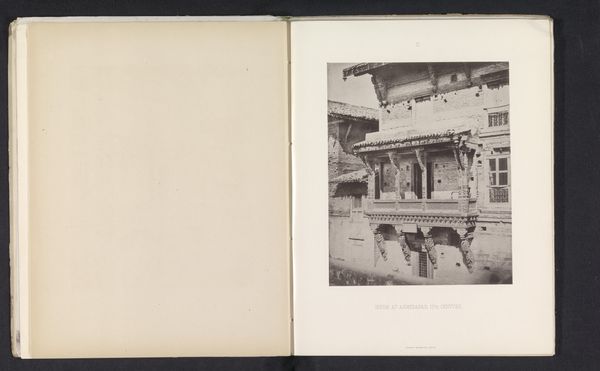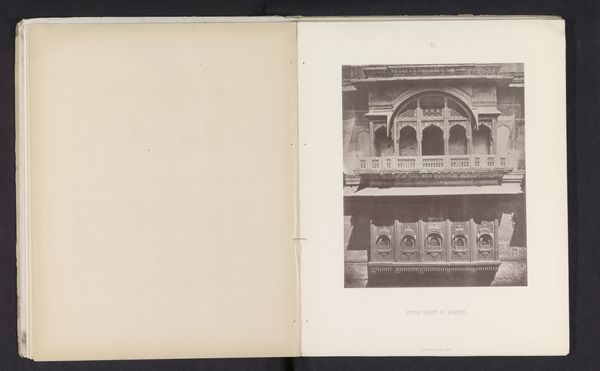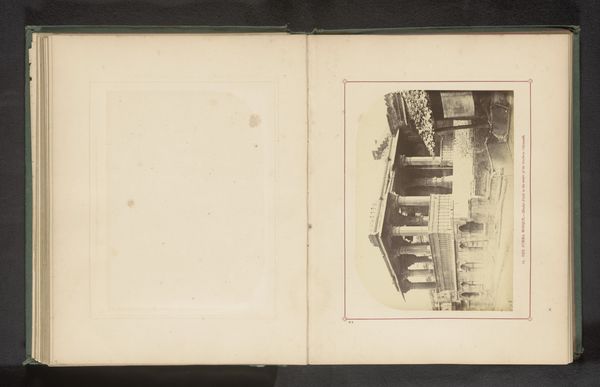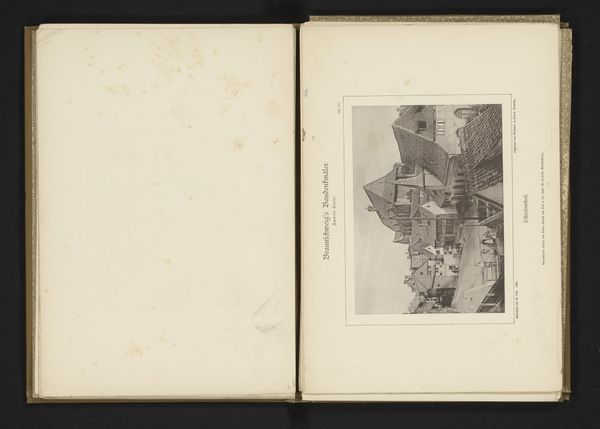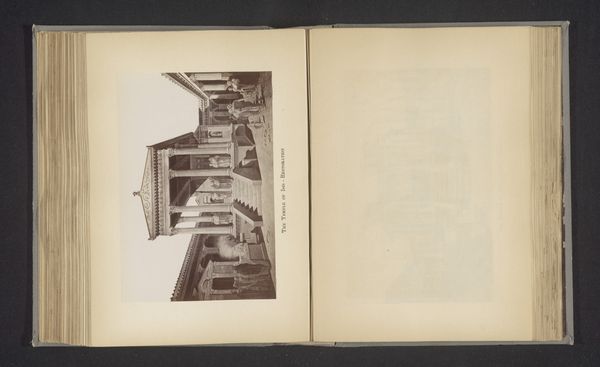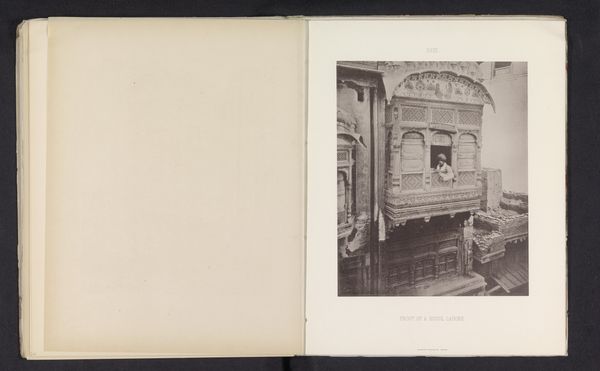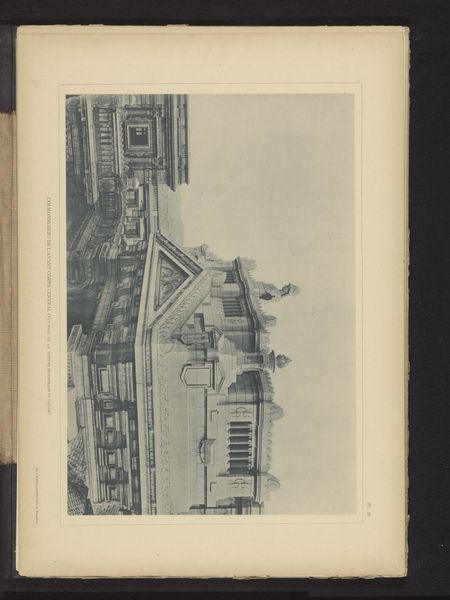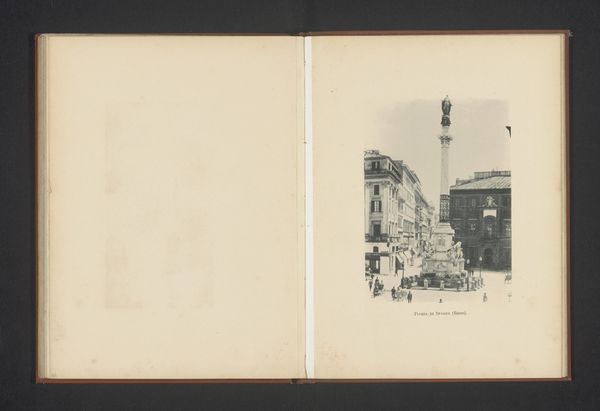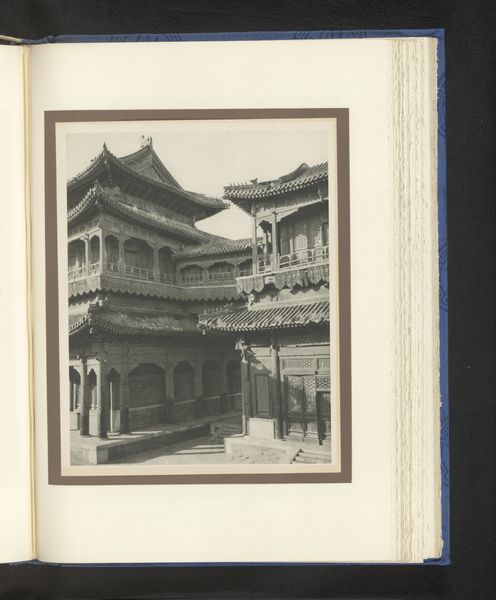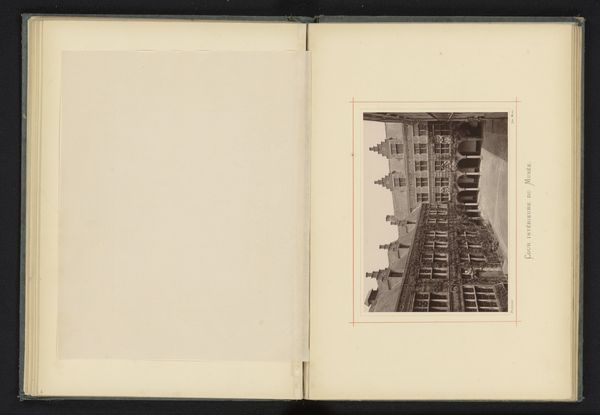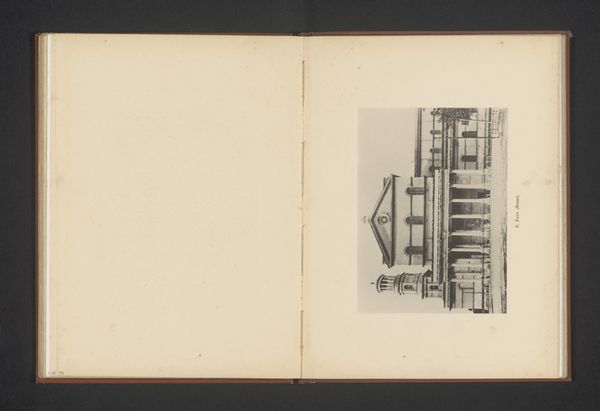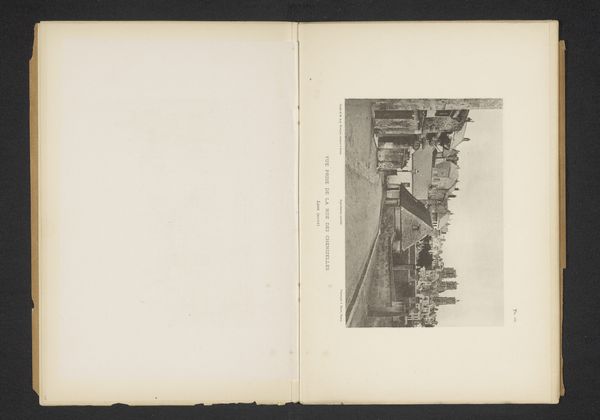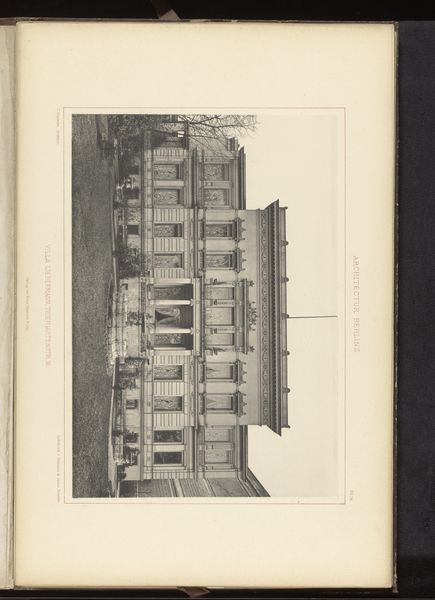
photography, architecture
#
photography
#
orientalism
#
architecture
#
building
Dimensions: height 233 mm, width 182 mm
Copyright: Rijks Museum: Open Domain
Editor: Here we have an anonymous photograph from before 1885, titled "Facade of a House with a Balcony in Ahmedabad." It depicts, well, exactly that. The photo gives the building a solemn feel, and I wonder about the stories held within those walls. How do you interpret this work, especially considering it’s categorized under Orientalism? Curator: That's a great question. The categorization is key. Looking through a postcolonial lens, these kinds of architectural photos, created within the Orientalist aesthetic, often served to exoticize and essentialize non-Western cultures for a Western audience. Editor: So it’s not just a photograph of a building? Curator: Exactly. We need to ask: who is taking the photo, and for what purpose? What power dynamics are at play? Think about how images like this could be used to create a sense of “otherness,” reinforcing Western dominance by framing Indian architecture as something mysterious and foreign. Editor: That makes sense. Were these images typically consumed by Western audiences back then? Curator: Often, yes. They circulated as postcards, illustrations in books, or even scientific studies. This image, absent human inhabitants and taken before 1885, suggests the construction of an idea – Ahmedabad as a site of architectural wonder to be observed and documented. How might this affect Ahmedabad's sense of self? Editor: So by stripping the everyday life and just focusing on the facade, it becomes more of an object than a place where people live and thrive. Curator: Precisely. It reinforces a narrative of the “exotic East” constructed through a Western gaze, overshadowing the complex social realities within the space. Editor: Wow, I hadn't considered that level of interpretation just from a photograph of a building. Thanks! Curator: It is a reminder that art doesn't exist in a vacuum. By exploring these socio-historical contexts, we start to unveil power structures deeply embedded within representation.
Comments
No comments
Be the first to comment and join the conversation on the ultimate creative platform.

